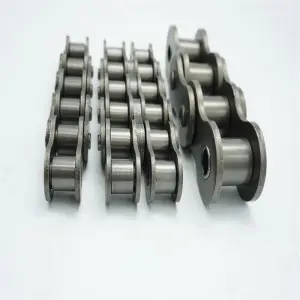Across the vast agricultural landscape, there exists a complex network known as a commodity chain. This concept sheds light on the entire journey of agricultural products from farm to fork, revealing the interdependence of the different actors and the processes involved. By delving into this fascinating topic, we can gain a deeper understanding of global agricultural systems and the challenges they face. In this blog, we’ll explore what agricultural commodity chains are and what they mean.
What is an agricultural commodity chain?
The core of the agricultural commodity chain describes the sequence of activities and actors involved in the production, processing, distribution and consumption of agricultural products. It provides insights into how agricultural commodities such as crops, livestock, and fisheries cross geographic borders and transform to meet consumer demand. Essentially, it represents the connections and relationships between different stages and actors in the agricultural supply chain.
Stages of the agricultural product chain:
1. Production: The journey of a product begins on the farm where the farmer grows the crops or raises the livestock. This phase includes activities such as soil preparation, sowing, cultivating plants, caring for animals and harvesting.
2. Processing: Once agricultural products are produced, they are processed to enhance their value, quality and shelf life. This phase involves activities such as sorting, grading, cleaning, packaging and preserving the product.
3. Distribution and transportation: After the products are processed, they are distributed to various markets, wholesalers, retailers and consumers. Transportation plays a vital role in the commodity chain, ensuring timely delivery while maintaining product integrity. Involving road, rail, air, sea and other transportation methods.
4. Marketing and retailing: The marketing and retailing stage represents the link between producers, intermediaries and consumers. It includes activities such as branding, advertising, pricing and displaying produce in supermarkets, grocery stores, farmers markets or through online platforms.
Significance of commodity chain in agriculture:
1. Global food security: Commodity chains allow countries with different agricultural capabilities to import and export agricultural products, ensuring a stable and diversified global food supply. It helps countries overcome food shortages and promote food security.
2. Economic impact: Commodity chains are an important source of economic growth and development, especially for developing countries that rely heavily on agriculture. They generate income, employment opportunities for farmers, and contribute to the country’s gross domestic product.
3. Environmental impacts: Understanding agricultural commodity chains can help reveal the environmental impacts of the various stages, enabling stakeholders to adopt sustainable practices. It promotes the adoption of eco-friendly farming techniques that minimize the use of chemicals, conserve resources and preserve biodiversity.
4. Social welfare: The commodity chain directly affects the living standards of farmers and workers in the agricultural sector. Commodity chains contribute to social welfare and empowerment by identifying and addressing issues such as fair wages, working conditions and labor rights.
Agricultural commodity chains are an important framework for understanding the complex dynamics of global food systems. They allow us to appreciate the efforts of farmers, processors, distributors and consumers to bring food from the farm to our table. By recognizing the importance of sustainable practices and increasing the transparency of commodity chains, we can work towards a more equitable and resilient agricultural industry. Let’s explore the many facets of the commodity chain and work towards a future where agriculture sustains the planet and its people.
Post time: Aug-15-2023

